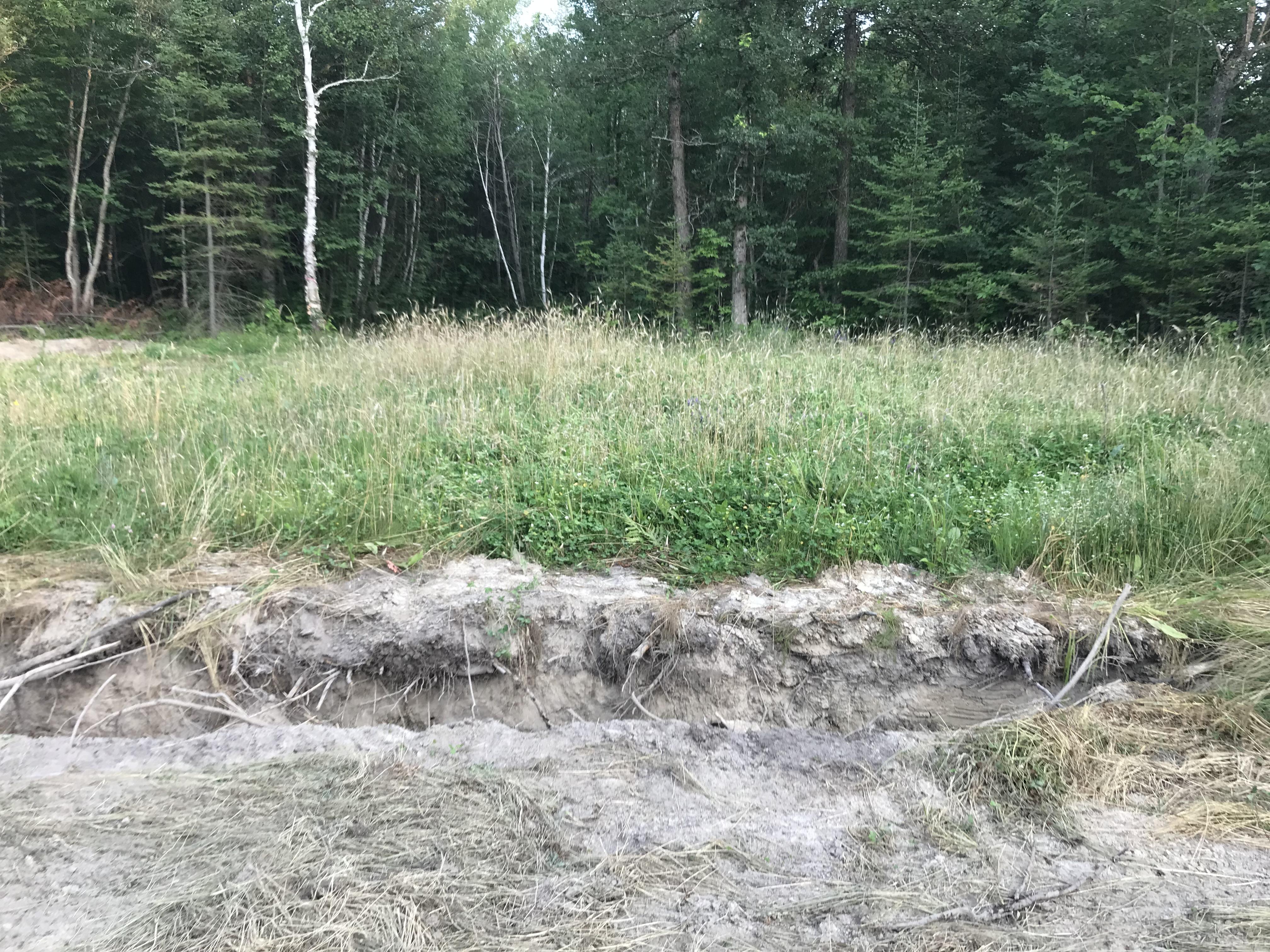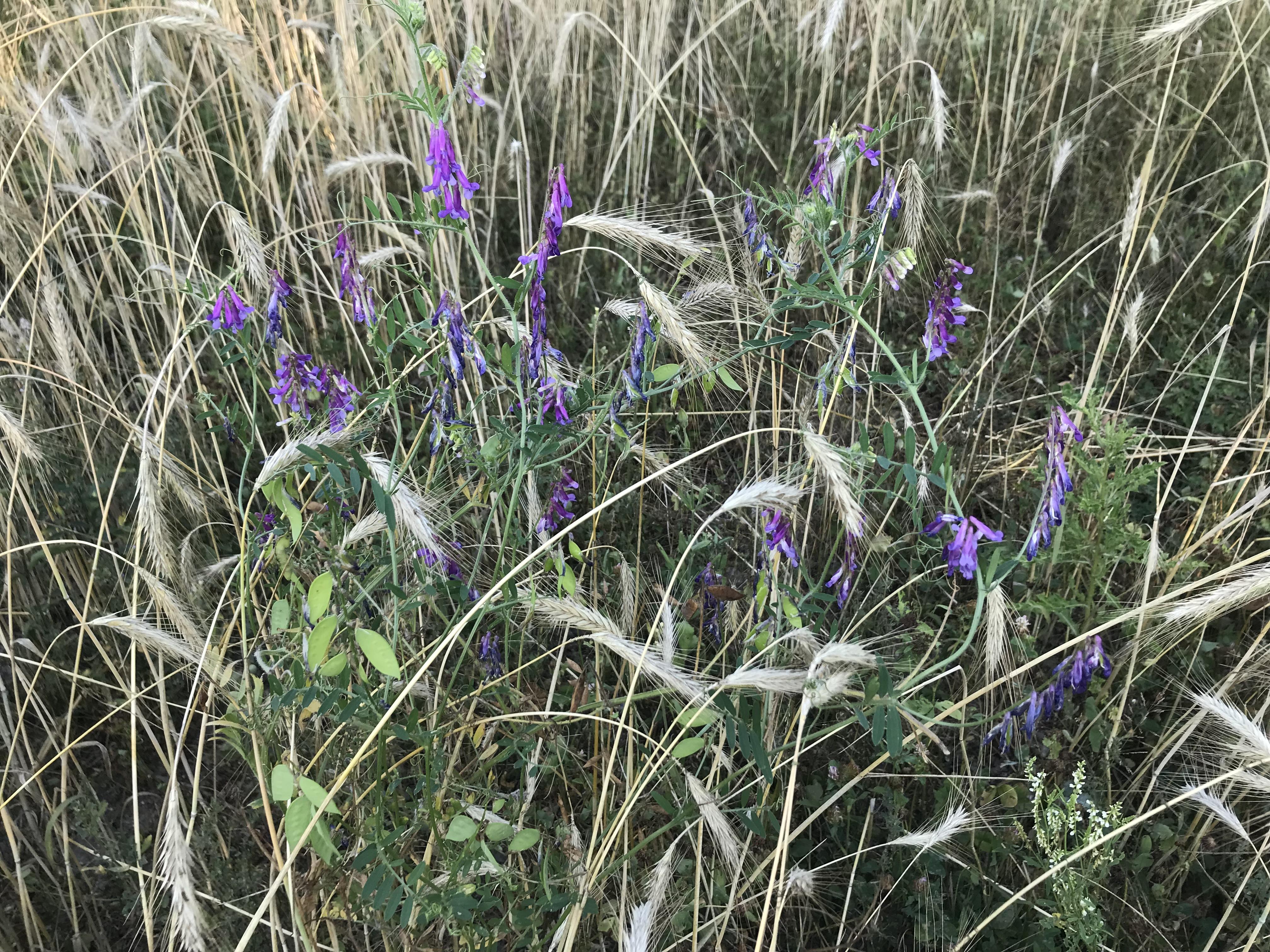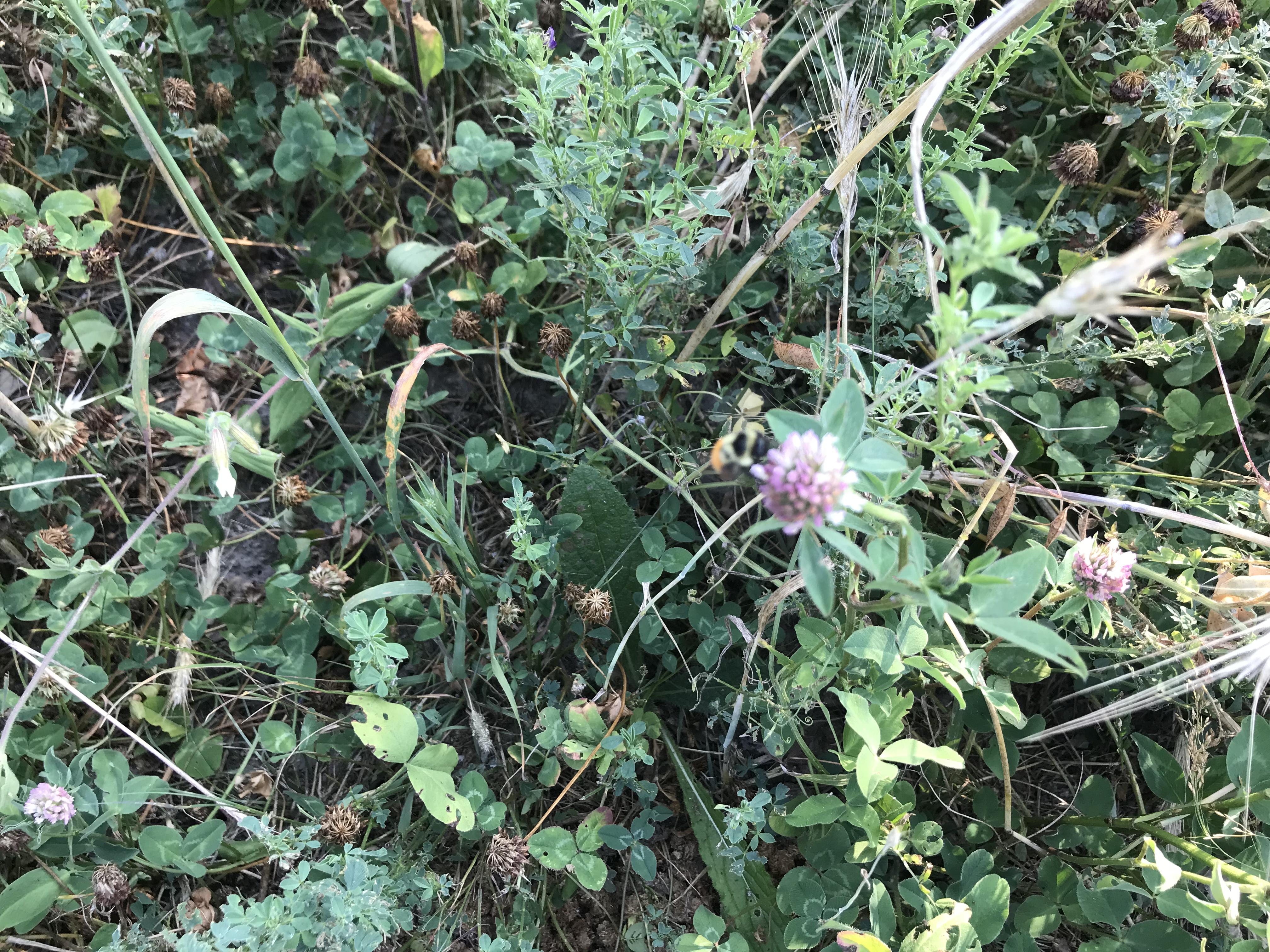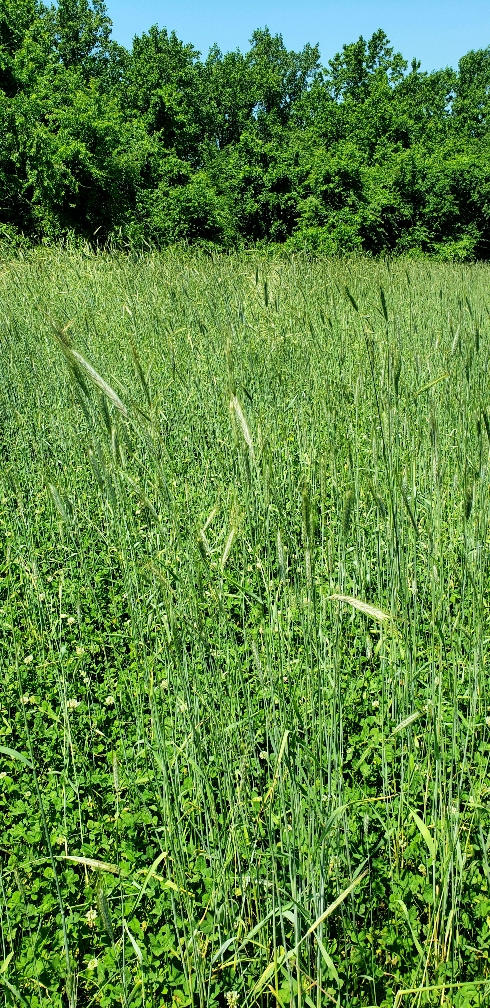You are using an out of date browser. It may not display this or other websites correctly.
You should upgrade or use an alternative browser.
You should upgrade or use an alternative browser.
Regenerative Plotting
- Thread starter MarkDarvin
- Start date
MarkDarvin
Well-Known Member
What's interesting about lime for me is, the whole reason I got interested in regenerative methods was to eliminate as much cost and summer chores as possible for food plotting. Now I'm back at it liming again, but it's exclusively on new ground. I haven't had to go back and lime stuff I've limed before. I had the crazy notion to try plotting new ground without liming, but that isn't going too swell so far.Pretty telling post right there. Looks like I’m gonna have pick up some pellet lime before fall. I’ve tried to spread some each year on different plots in a rotation, but I’ve gotten lax, and I need to get more organized with it too.
I have quit soil testing, and instead go by observation. My indicator species for needing lime are fern and horsetail. If I have a little, I don't get too excited. If it's a full flush and not much else growing, I'm heading to town immediately.
I should really try throwing a bag on some forest regen to see how that changes.
KSQ2
Well-Known Member
Thanks, that helps! I’ll begin paying closer attention to what is creeping into the plots. Of course our biggest culprit is johnson grass. I don’t think imbalanced ph has much to do with it. It flourishes about everywhere down here, including ph balanced crop fields.What's interesting about lime for me is, the whole reason I got interested in regenerative methods was to eliminate as much cost and summer chores as possible for food plotting. Now I'm back at it liming again, but it's exclusively on new ground. I haven't had to go back and lime stuff I've limed before. I had the crazy notion to try plotting new ground without liming, but that isn't going too swell so far.
I have quit soil testing, and instead go by observation. My indicator species for needing lime are fern and horsetail. If I have a little, I don't get too excited. If it's a full flush and not much else growing, I'm heading to town immediately.
I should really try throwing a bag on some forest regen to see how that changes.
MarkDarvin
Well-Known Member
I'll be liming for the next couple weekends. I may get it all done this weekend if I go and get a second load. It's going to be hot, but I may do it anyway just so it's done. I'll get all my gypsum on for the year too.
Okvet03
Member
Has anyone tried Mycoapply? Half my plots are pure sand with almost no organic matter. In the spring and summer my seed can't out compete the native "weeds" on this depleted soil. I tell myself at least something is covering the bare earth. In the fall cereals do OK. Not sure how they willl do this year without fertilizer. I was wondering if the Mycoapply might jumpstart some of the biology. Thoughts?
MarkDarvin
Well-Known Member
I think you'd get the myco jumpstarted naturally if you can generate a duff layer. Can your native weeds cover the soil if you let them? I wonder if a late mowing of your native vegetation would leave you enough room to get a crop of rye/hairy vetch going before winter? Those types of situations, I focus on getting the system going before I try growing deer food.
The myco needs something to eat. Without any carbon/organic matter in the soil, they won't really get established. I'd work to find anything that will grow in the sandy soil to build up OM. They might not initially be "food plot" typical species. Give it a year, and then see what happens.Has anyone tried Mycoapply? Half my plots are pure sand with almost no organic matter. In the spring and summer my seed can't out compete the native "weeds" on this depleted soil. I tell myself at least something is covering the bare earth. In the fall cereals do OK. Not sure how they willl do this year without fertilizer. I was wondering if the Mycoapply might jumpstart some of the biology. Thoughts?
Okvet03
Member
That makes sense. We've had a good deal of rain and relatively mild temperatures so far. The main field has a lot of panicgrass, Indian grass and sandburs with partridge pea, butterfly pea and a few wildflowers mixed in. I'll try planting in to it in September then cultipack and mow. I was planning on going in with WR, WW, oats, Winter peas, hairy vetch and some clover.
DocHolladay
Well-Known Member
We have a plot at my lease that is really sandy and there is pure sand about 6” down. We have poured the coals to grass(ww, wo, wr, spring oats) and clover seed. We mix in a little beans in the spring and brassicas in the fall, but the grasses have really turned it around. The bad news is, the logging company that was there this past winter used it as a log deck and we are back to square one, but we fixed it once, we can do it again.
Sent from my iPhone using Tapatalk
Sent from my iPhone using Tapatalk
Chipdasqrrl
Active Member
It would be nice to know whether the change of pH or the addition of calcium/magnesium was more responsible for the clearly improved growth in response to liming. I think both make a big difference as Ca/Mg are macronutrients.
My guess is that the pH was the main reason for the clover since it should significantly improve nitrogen fixation
Sent from my iPhone using Deer Hunter Forum
My guess is that the pH was the main reason for the clover since it should significantly improve nitrogen fixation
Sent from my iPhone using Deer Hunter Forum
buckhunter10
Well-Known Member
Has anyone tried Mycoapply? Half my plots are pure sand with almost no organic matter. In the spring and summer my seed can't out compete the native "weeds" on this depleted soil. I tell myself at least something is covering the bare earth. In the fall cereals do OK. Not sure how they willl do this year without fertilizer. I was wondering if the Mycoapply might jumpstart some of the biology. Thoughts?
I am going to say, yes it is worth a try to innoculate seeds with mycorrhizae fungi - in your situation. The most detrimental impact to fungi is tillage, don't till.
However, if you can get fungi populations established they are the network between plants and allow the microbes to traverse through the soil, from one plant to another. This is how/why in highly functional systems with a good fungal network, we can see plants with more drought tolerance support plants with less - through the transfer of microbes through this network and into the plant as endophytic bacteria.
Mycorrhizae does however need the sugars from plant root exudates to survive and thrive -so, no tillage and a constant root will help you to get this population established. In your situation, having a high fungal population will help, as the mycorrhizal network will create and release glomalin which is the glue that holds the soil together, creating better soil aggregation, which is exactly what you need.
So to me, yes I think it is worth a fungal inoculant try to jump start things... just my two cents.
6.2 Glomalin-related soil protein
Arbuscular mycorrhizal fungi (AMF) can form symbiotic mutualism with roots of most crops, in which crops allocate photosynthetic carbon to AMF in return for nutrients, e.g., P and N. AMF hyphae can excrete a long carbon chain glycoprotein, glomalin, which not only promotes soil aggregation through adhesion of microaggregates, but also increases carbon storage because of its intrinsic recalcitrance. Straw incorporation was found to significantly influence the root colonization activity by AMF and glomalin content in the soils (Borie et al., 2002).
full source if interested in more specific information about Glomalin -https://www.sciencedirect.com/topics/agricultural-and-biological-sciences/glomalin
Hope this helps-
AT
MarkDarvin
Well-Known Member
I don't think any of those products (myco, humics, fulvics) are necessary in a regenerative system. All those things exist in the soil already, and will continue to exist until we take them out. I think we talked about this a while back, and I had dug up an exhaustive list of tree and plant species that host myco fungi, and I came to my own conclusion that it's simply not necessary to buy that stuff unless you've killed your soil system.
buckhunter10
Well-Known Member
I don't think any of those products (myco, humics, fulvics) are necessary in a regenerative system. All those things exist in the soil already, and will continue to exist until we take them out. I think we talked about this a while back, and I had dug up an exhaustive list of tree and plant species that host myco fungi, and I came to my own conclusion that it's simply not necessary to buy that stuff unless you've killed your soil system.
Yes, they exist but at extremely varying levels. Are they needed, no but worth consideration?! Yes.
Especially for some with low CEC soil and low OM.
Trying to “build OM” in sandy soils is extremely difficult. If I can find a product the helps me establish a stronger fungal network faster, for a relatively inexpensive cost - why would I not do this?
Also - most soils (even Ag) but especially food plot soils where they’ve been tilled, sprayed, old logging decks, etc. are fairly well depleted.
I am interested in your list of plant host species, but also if/how the relationship is sequestered as they can host it but does it need to be present?
This is one I struggle with as I normally don’t love to just throw stuff out there but I’ve seen some remarkable tests done on gardens where the plants inoculated with myco vs. non-inoculated - grew far better, in the same soils- next to each other. Showing the inoculation jump-started the ability to establish.
In the long run, if you have a decent OM and CEC above 10. I’d say you’re correct on just using diversity to increase soil health both bacterial and fungi.
However, I still believe there may be more ways to skin this cat in sandy soils. Humic is one I am very interested in, specifically to CEC and anion exchange capacity - its ability to hold N in areas where it normally leaches. Etc.
Last edited:
MarkDarvin
Well-Known Member
It is amazingly dry in northern MN. I don’t think we’ve had more than 1.5” since April 6th. My perennial polyculture plots are holding on. This one looks great. I’ve got another that looks tougher, but it’s still getting a ton of use by the deer.

I have nailed my system down to planting nearly everything. I can’t even remember all the stuff I put out there. Hairy vetch has quickly become a favorite of mine as it just seems to shine on marginal soil. What’s cool, is it looks like I’m very close to a crop of viable seed. I plan to mow this in another 2-3 weeks. I’d love to see my rye and vetch reseed themselves. That’d be a first for me.



There was a great crop of bumble bees working between the clover, alfalfa, and the vetch.

Sent from my iPhone using Tapatalk

I have nailed my system down to planting nearly everything. I can’t even remember all the stuff I put out there. Hairy vetch has quickly become a favorite of mine as it just seems to shine on marginal soil. What’s cool, is it looks like I’m very close to a crop of viable seed. I plan to mow this in another 2-3 weeks. I’d love to see my rye and vetch reseed themselves. That’d be a first for me.



There was a great crop of bumble bees working between the clover, alfalfa, and the vetch.

Sent from my iPhone using Tapatalk
buckhunter10
Well-Known Member
It is amazingly dry in northern MN. I don’t think we’ve had more than 1.5” since April 6th. My perennial polyculture plots are holding on. This one looks great. I’ve got another that looks tougher, but it’s still getting a ton of use by the deer.

I have nailed my system down to planting nearly everything. I can’t even remember all the stuff I put out there. Hairy vetch has quickly become a favorite of mine as it just seems to shine on marginal soil. What’s cool, is it looks like I’m very close to a crop of viable seed. I plan to mow this in another 2-3 weeks. I’d love to see my rye and vetch reseed themselves. That’d be a first for me.



There was a great crop of bumble bees working between the clover, alfalfa, and the vetch.

Sent from my iPhone using Tapatalk
I have never had much luck with rye re-seeding - does anyone know why? It is fall-planted and the seed should vernalize over winter, yet I never seem to have it happen.
I know some guys do, but I never have! Vetch seems to do very well for me, I love the stuff!
Nice pictures!!
Mennoniteman
Well-Known Member
You must be doing something different, because rye is easy to grow and is the winter bread and butter of my food plots in zone 6b. Are you planting within 2 weeks before or after labor day? Are you spraying really heavy with a carryover herbicide several months before that is stunting growth? If broadcasting into existing clover, are you mowing it short after broadcasting? Is the seed hitting dirt, or is there a heavy thatch?I have never had much luck with rye re-seeding - does anyone know why? It is fall-planted and the seed should vernalize over winter, yet I never seem to have it happen.
I know some guys do, but I never have! Vetch seems to do very well for me, I love the stuff!
Nice pictures!!
This is my rye on June 1st that was broadcast 200 lb per acre into existing clover last labor day, then mowed the clover on top of the seed. Since we had hardly any snow the deer grazed this 1 acre plot all winter long.

buckhunter10
Well-Known Member
You must be doing something different, because rye is easy to grow and is the winter bread and butter of my food plots in zone 6b. Are you planting within 2 weeks before or after labor day? Are you spraying really heavy with a carryover herbicide several months before that is stunting growth? If broadcasting into existing clover, are you mowing it short after broadcasting? Is the seed hitting dirt, or is there a heavy thatch?
This is my rye on June 1st that was broadcast 200 lb per acre into existing clover last labor day, then mowed the clover on top of the seed. Since we had hardly any snow the deer grazed this 1 acre plot all winter long.

Sorry for the confusion, I don't have any issue growing rye - I can grow the snot out of it. I just haven't had where if I leave it go all through the next Spring (which I often do for fawning cover and broadcast into it to add diversity). However, I never have it re-seed itself well from there. Come fall, I typically spread and mow or spray/spread seed (always with rye included -my favorite crop for deer) depending on the composition of the field.
MarkDarvin
Well-Known Member
I may have asked you this once before, but what kind of mower do you use when you do that? I hit some clover with a walk behind brush hog last year, and I got a decent stand of rye, but then my deer pawed the snot outta the plot in the snow, and I think that really messed up my rye survival.You must be doing something different, because rye is easy to grow and is the winter bread and butter of my food plots in zone 6b. Are you planting within 2 weeks before or after labor day? Are you spraying really heavy with a carryover herbicide several months before that is stunting growth? If broadcasting into existing clover, are you mowing it short after broadcasting? Is the seed hitting dirt, or is there a heavy thatch?
This is my rye on June 1st that was broadcast 200 lb per acre into existing clover last labor day, then mowed the clover on top of the seed. Since we had hardly any snow the deer grazed this 1 acre plot all winter long.
Mennoniteman
Well-Known Member
I have an 8' wide 3pt JD brush hog on a 75hp tractor that I run at lower rpms and it really mows nice in any conditions. Deer nibbling rye down into the dirt in the winter is normal for me and it never hurts the stand in the spring.I may have asked you this once before, but what kind of mower do you use when you do that? I hit some clover with a walk behind brush hog last year, and I got a decent stand of rye, but then my deer pawed the snot outta the plot in the snow, and I think that really messed up my rye survival.
Key to broadcasting: seed twice the rates that you think. Up to 300 lb per acre.
Mennoniteman
Well-Known Member
That makes sense, rye doesn't reseed itself well for me, however, I never make much effort in that direction, because reseeding would be too early for my program, it would get way too big before the first frost. Rye is one of my most important plantings as well, mainly for winter food and spring cover.Sorry for the confusion, I don't have any issue growing rye - I can grow the snot out of it. I just haven't had where if I leave it go all through the next Spring (which I often do for fawning cover and broadcast into it to add diversity). However, I never have it re-seed itself well from there. Come fall, I typically spread and mow or spray/spread seed (always with rye included -my favorite crop for deer) depending on the composition of the field.
Similar threads
- Replies
- 18
- Views
- 2K
